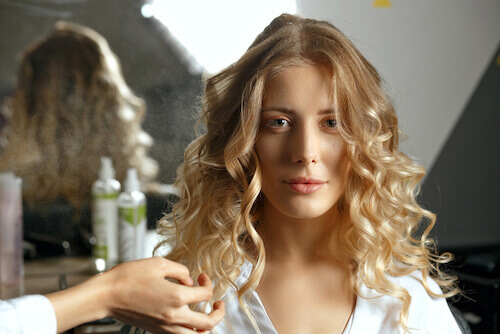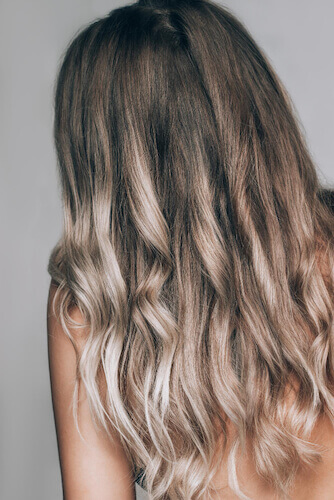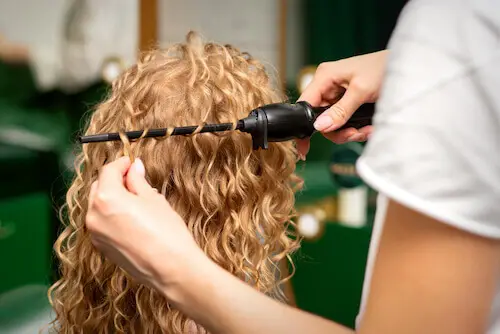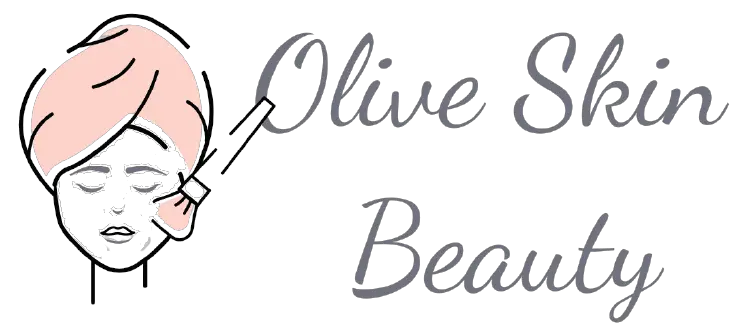Are you curious about the different types of curl? Each type has its own unique characteristics, and knowing your curl type is the first step to finding the best hair care routine for you.
Just like with hair texture and color, curls come in a variety of shapes, sizes, and textures. Depending on your curl type, you may need to use different products and techniques to style and care for your hair.
So, what’s your curl type?
In this blog post, we’ll discuss the 4 most common types of curl, and we’ll provide tips on how to care for each type. So, if you’re curious about your curls, keep reading!
Wavy Curls
This is the most common type of curl. In this curly hair type, your hair springs out from your head in a circular pattern. Yes, just like spring! If you have an “S” shaped curl pattern, then you have wavy hair.

Here’s another way to think about it: if your hair lays mostly straight when wet, then you have a wavy curl type.
If you have wavy curls, congratulations!
Your hair has a natural “S” pattern which means that it will curve in towards your head. This can make it more difficult for you to see what’s going on with your hair, and it may be harder for you to get products for all of the areas of your hair. However, this isn’t necessarily a bad thing.
As long as you take some time every day to care for your wavy hair, then your waves should remain bouncy and beautiful!
To maintain your waves:
- Use a clarifying shampoo every 3-5 days.
- Try not to use too much conditioner when washing – conditioner coats your hair, which can weigh your waves down.
- Use a lightweight leave-in conditioner every day after you shampoo.
When it comes to styling your limp wavy curls, use a texturizing product.
This will help define your waves and give them more body! You can also try diffusing or air drying for bouncy waves without too much frizz.
Loose Curls
If instead of curling out from the scalp, your curl pattern springs up from the scalp and curls towards the ends, then you have loose curls.

This is a common type of curl that many women end up choosing.
If you look closely at your hair in the mirror, it should be laying mostly flat against your head.
The texture of this curl type is fine and wavy.
You can use a wide-toothed comb to determine your curl type. If you see loose, wavy clumps of hair between the teeth of the comb, then you have loose curls.
When it comes to styling products for this hair type, use lightweight products.
You want to give yourself as natural a finish as possible while still keeping the frizz and puffiness to a minimum.
To style
- Try diffusing your hair (using this hair diffuser) to give it some volume while still keeping the curls intact.
- Use a light leave-in conditioner and scrunch up towards the scalp with your fingers. Your curls should spring up and stay in place better this way.
Tight Curls
This is the rarest type of curl pattern. If you have tight curly hair, then your curls should be very close to one another, and their spring pattern should curve inward towards your head.

Tight curls are very similar to kinky or coily hair. You’ll notice that when looking at other people who have tighter curls than your own, their hair won’t lay down flat against their scalp.
Most people with tight curly hair aren’t looking for a way to straighten it out.
You’ll need some special techniques in order to avoid frizz and tangles when styling your hair.
When compared with other curly hair types, it may seem dry and stiff. However, you should still use products that are light and won’t weigh down your hair.
To style
- Use a deep conditioner every day. If your hair is dry, then try oil cleansing before washing to keep the product from stripping too much when you shampoo.
- After shampooing, use a leave in conditioner and water mixture (50/50 ratio) all over your hair and scalp – this helps add moisture without weighing down your curls.
- Try plopping or clipping your wet curls onto the top of your head while you air dry somewhere between 15-30 minutes. This will give you tight waves instead of puffy curls.
- You can also try using a hair diffuser to speed up your drying process without adding too much frizz and frizziness.
Types of curling wands
The type of curling wand or rod that you use will determine what kind of curl you create with it since each one has its own shape.
There are many types of different curling wands which include:
- Conical
- Tapered
- Flared
- Clipless
- Mixed
1) Conical – has the same shape like a screw so it’s able to fit in different sizes of sections for curling.

Which makes it convenient when you’re doing your hair by yourself. This type of wand is great for creating looser waves and loose curls too.
2) Tapered – the tip is much smaller than the base which will create more natural looking waves when curling or adding volume at the roots.

This is also easier to use when curling short hair or shorter sized sections . Plus , since there are no edges, it won’t snag on your hair while in use.
3) Flared – this type has an oval shape which can make tighter curls if you want but it also allows you to make looser waves too.

This is a type of wand that I personally use the most often because it’s great for all lengths and types of hair.
4) Clipless – GVP do this clipless curling wand and the main purpose of this type is to create volume in your hair when curling, which makes it perfect for short hair or shorter curls . Plus , since there isn’t a clip in the way, you can curl your entire head in just one quick pass!
5) Mixed – this kind has pros and cons like every other kind so depending on what you want to achieve with your hairstyles, you might find yourself using different kinds more than others.

For example: if you want loose waves then go with a conical or tapered wand but if you want tight curls, then go with a flared or clipless wand.
Tips for using your curling wand
Below are some tips on how to avoid accidents when using your curling wand.
- Never hold the base of your hair in the clamp when curling because it will create a crease that won’t come out and instead just cause more damage to your hair . You can also burn yourself with this method since it’s dangerous! Instead, wrap sections of hair all the way around the barrel without holding onto the actual clamp itself.
- When you’re finished doing each section of hair, wait about 5 seconds before releasing so that there aren’t any unwanted kinks or crimps in your curls
- This may be obvious to some people but make sure you use a heat protectant sprayor oil before using heat on your hair and always wear protection when curling to prevent any accidents from happening
Everyone’s hair is different so experiment with different types of wands until you find what works best for you!
Final Thoughts
Remember that before using your curling wand, you should first determine what kind of curl or waves you want to create and choose a type of wand that will produce the look you’re going for.
It’s important to remember each type has its pros and cons so depending on your hair length or how long it is, you might have to try different types until you find one that works best for your needs.
Don’t rush through curling each section of hair because this will only cause damage and split ends. So take your time.
I learned really early that even when in a hurry, all you need is a little patience – it’s easy enough once you get the hang of it.
Good luck.

